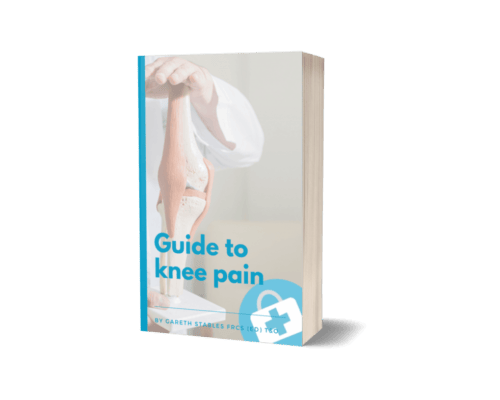ROSA® Robotic Knee Replacement: A Knee Specialist’s Guide to a Faster Recovery

As a knee specialist, I see countless patients struggling with chronic knee pain caused by osteoarthritis. This degenerative joint disease can significantly impact your mobility and quality of life. Fortunately, total knee replacement surgery offers a lasting solution for many patients. However, traditional knee replacement techniques can involve large incisions, leading to significant post-operative pain and a lengthy recovery period.
That's where the exciting advancement of ROSA® robotic knee replacement comes in. This minimally invasive surgical technique utilizes robotic assistance to achieve greater precision in implant placement, potentially leading to a smoother recovery and faster return to your active life.
Understanding the Benefits of ROSA® Robotic Knee Replacement:
Let's delve deeper into the unique advantages that ROSA® offers over traditional knee replacement surgery:
- Minimally Invasive Approach: ROSA® utilizes a computer-assisted surgical system to guide the surgeon during the procedure. This allows for smaller incisions, resulting in less damage to surrounding muscles, tendons, and ligaments. This translates to a more comfortable surgical experience with reduced post-operative pain.
- Faster Recovery: By minimizing tissue disruption, ROSA® can significantly shorten your hospital stay. This means you'll be back home and on the path to recovery much sooner compared to traditional surgery. Additionally, the smaller incisions associated with ROSA® heal faster, leading to a quicker return to daily activities.
- Precise Implant Placement: One of the most significant advantages of ROSA® is its ability to achieve superior implant placement. The robotic arm assists the surgeon in precisely aligning the implant components based on a pre-operative 3D model of your specific knee anatomy. This precision can lead to better long-term function, potentially increasing the lifespan of your knee implant.
- Reduced Risk of Complications: Minimally invasive surgery often translates to a lower risk of complications. Since ROSA® reduces tissue disruption, it can decrease the risk of infections and post-operative stiffness. This translates to a safer and smoother recovery for patients.
- Improved Long-Term Outcomes: The precise implant placement achieved through ROSA® can lead to a more natural feeling knee joint and improved range of motion. This can translate to better long-term function, allowing you to enjoy an active lifestyle for years to come.
Who is a Candidate for ROSA® Robotic Knee Replacement?
ROSA® is not necessarily a one-size-fits-all solution. Here are some factors to consider when discussing ROSA® with your knee specialist:

- Severity of Osteoarthritis: ROSA® is typically recommended for patients with moderate-to-severe osteoarthritis that significantly impacts their daily activities and hasn't responded to conservative treatment options such as physical therapy and medication.
- Overall Health: As with any surgery, it's crucial to be in good overall health before undergoing ROSA®. Your doctor will assess your medical history and current health status to determine if ROSA® is the safest and most suitable option for you.
- Activity Level: Active individuals who desire a faster return to their pre-operative activities can benefit significantly from the quicker recovery associated with ROSA®.
What to Expect During a ROSA® Robotic Knee Replacement Surgery:
While ROSA® utilizes robotic assistance, it's important to understand that the surgeon is still very much in control. Here's a breakdown of what you can expect during a ROSA® robotic knee replacement procedure:
- Pre-Operative Planning: Prior to surgery, a 3D model of your knee joint will be generated using specialized X-rays. This allows your surgeon to meticulously plan the procedure, ensuring the precise placement of the implant components for your unique anatomy.
- Surgical Procedure: During the surgery, the surgeon will utilize the ROSA® robotic arm to guide their movements with exceptional precision. The robotic arm does not perform the surgery independently; it functions as a sophisticated tool that enhances the surgeon's skill and accuracy.
- Post-Operative Care: Following surgery, you'll receive comprehensive pain management and rehabilitation instructions. Physical therapy will play a crucial role in regaining strength, flexibility, and range of motion in your new knee joint.
Beyond the Advantages: Understanding the Potential Risks:
While ROSA® offers significant benefits, it's important to be aware of the potential risks associated with any surgery:
- Infection: As with any surgery, there's a small risk of infection. Your surgeon will take all necessary precautions to minimize this risk.
- Bleeding: Bleeding can occur during or after surgery. Your doctor will discuss your medical history to assess any potential bleeding risks.
- Blood Clots: Blood clots are a potential risk after surgery. Your doctor may prescribe blood thinners to help prevent this complication.
- Stiffness: Post-operative stiffness can occur, but dedicated physical therapy will help regain flexibility and range of motion in your knee
This article contains affiliate links that can earn us revenue.


